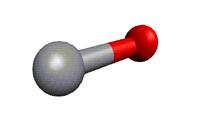|
With respect to version 1 from June 2009, the data set
has been reevaluated. An isotopic invariant fit was
performed as described in
(1) S. Spezzano, S. Brünken, H. S. P. Müller,
G. Klapper, F. Lewen, K. M. Menten, and S. Schlemmer,
2013, J. Phys. Chem. A 117, 9814.
Transition frequencies for the main isotopolog were
mostly taken from (1) and from
(2) M. Bogey, C. Demuynck, and J. L. Destombes,
1983, J. Chem. Phys. 79, 4704.
Additional data were taken from
(4) K. V. L. N. Sastry, P. Helmlnger, E. Herbst,
and F. C. De Lucia,
1981, Astrophys. J., 250, L91;
and from
(5) F. C. van den Heuvel and A. Dymanus,
1982, Chem. Phys. Lett. 92, 219.
Data for 13CO+ and C18O+
come from (1) and (2) while those for 13C18O+
are entirely from (2). Transitions with uncertainties
> 250 kHz have not been merged.
Also used in the fit were infrared transitions
published by
(6) P. B. Davies and W. J. Rothwell,
1985, J. Chem. Phys. 83, 5450.
Two pairs of transitions (N =
8 – 9 and 5 – 4)
with residuals much larger than the uncertainties
were omitted.
In addition, Y20 and Y30
were taken from
(7) W. Szajna, R. Kepa, and M. Zachwieja,
2004, Eur. Phys. J. D 30, 49.
Predictions beyond 2 THz should be viewed
with some caution.
The dipole moment value was published by
(8) J. K. Thompson, S. Rainville, and D. E. Pritchard,
2004, Nature 430, 58.
|
